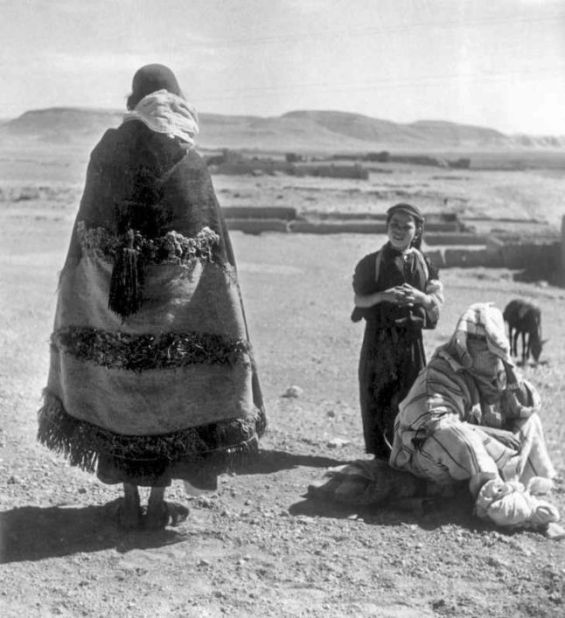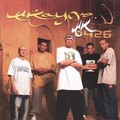Ancient garments woven by Moroccan women speak volumes about how Amazigh tribes inhabiting the Atlas Mountains lived, their beliefs, and traditions. Akhnif is one of these pieces of clothing, crafted thoughtfully by the women of the Ait Ouaouzguit confederation inhabiting the Sirwa region, at the junction of the High Atlas and Anti-Atlas mountain ranges.
The cloak, burnous, or cape is made out of wool mixed with goat hair, which gives it its unique black color. The woven long cloak is designed to protect its wearer from the cold weather of the mountains.
A description of the garment, made back in 1950, from the British Museum details that this cape was woven «using a slit-tapestry technique in black-dyed wool and goat’s hair». The cloak measures 146 centimeters in length from hem to hood, including the fringes, and 239 centimeters in width for a better wrap.

Akhnif is made by women but worn by both men and children. The materials used to make it were ideal for the colder seasons, making it impermeable to water. Its width gave it a wrapping quality, as it could be thrown over the shoulder in a bat-like style.
A cape against the evil eye
But in addition to its warming and cold-weather protective qualities, this cape also had supernatural qualities. In fact, Akhnif is decorated with a central, large shape resembling a red eye—an eye that protects the wearer from evil.
Dr. Lisa Bernasek, whose research focused on the collection, exhibition, and circulation of North African art and material culture in state museums and North African-run cultural sites in Paris, details what the motif on the back of the burnous meant for the Ait Ouaouzguit people.
«This handsome cape, or Akhenif, offered its wearer multiple layers of protection», she remarked. «On the symbolic level, the large red shape on the back of the cloak is usually interpreted as a dramatic eye meant to protect the wearer from the malignant forces of the evil eye», she explained.

This pattern that spans the back of Akhnif features embroidered decorations on the two ends of the «red eye». The eye is split in the middle with colorful embroidery that forms an arrow shape, as if the eye is squinting or half-closed.
Other interpretations have also been given to the patterns on Akhnif. Bernasek indicates in her book «Artistry of the Everyday: Beauty and Craftsmanship in Berber Art» that the «elongated pattern in the center of the red eye is sometimes called a lizard or a snake». This pattern shares a similar protective function. It is seen as «another defensive symbol». «Other patterns woven into the cloak may have had protective as well as decorative qualities», she added.

Protective mothers
This was the case for Akhnif worn by men. For those worn by children, the purpose was different. Atlas Mountain children wearing Akhnif are protected by the power of their mother’s reproductive organ.
Akhnifs worn by children feature a red lens on the back, but a slightly different one. The red half-moon shape represents a «vulva», wrote Swiss scholar Bruno Barbatti in his book «Berber Carpets of Morocco».
«It is the symbol for the mother who all her life ‘carries her son in her womb’ and lovingly hopes to protect him with this cape», Barbatti explained. A picture of the children’s version of Akhnif shows that the lens on the back «contains only one modest lozenge and, on each side, three tiny quincunxes (‘fives’)», he added. He further explains that a lozenge with six quincunxes is a sign of a newborn child.

The unique embroidery and shape of Akhnif have made it one of the most famous capes among European visitors and researchers in Morocco.
While visiting Morocco in the late 19th century, French missionary Charles de Foucauld was particularly attracted to Akhnifs, especially when visiting Taznakht, a weekly market located in the Sirwa region. There, he noticed that Akhnif «was actively made and traded», wrote Dr. Cynthia Becker, Professor of African art history in the History of Art & Architecture Department at Boston University.
Akhnif is now present in several renowned museums around the world. It can be found in the Peabody Museum of Archaeology and Ethnology at Harvard, The Art Institute of Chicago, the Newark Museum, The Metropolitan Museum, Musée du Quai Branly in Paris, and the National Museum of World Cultures in the Netherlands.





 chargement...
chargement...












